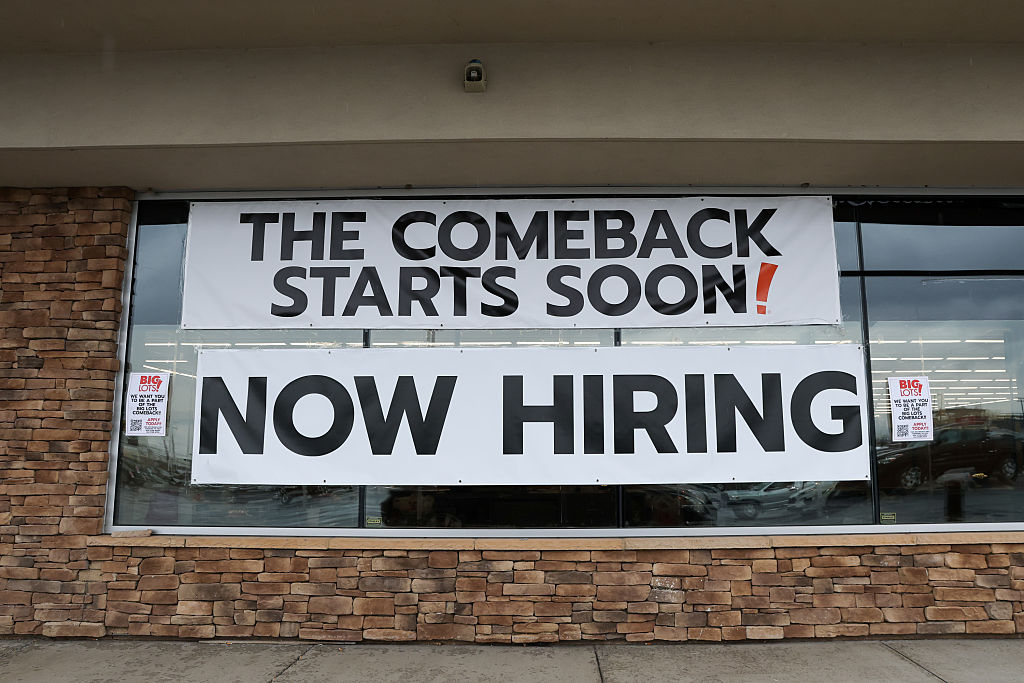



Loading the Elevenlabs Text to Speech AudioNative Player...
On paper, the unemployment rate sits at 4.2% and has remained below 5% for nearly four years. At first glance, the US labor market appears to be in good shape: Companies are still adding more than 100,000 jobs per month, wage growth is healthy, and many individuals are returning to the workforce. Everything is fine and dandy in a volatile economic climate. But is it really? Not if you refrain from believing the flawed government statistics.
In October 2020, the Ludwig Institute for Shared Economic Prosperity, or LISEP, announced a new statistical measure: the “True Rate of Unemployment.” In addition to out-of-work individuals, the gauge also takes into account part-time workers who cannot find full-time employment and employees stuck in so-called poverty-wage jobs. Put simply, the organization refers to it as “functional unemployment.”
“We are facing a job market where nearly one-in-four workers are functionally unemployed, and current trends show little sign of improvement,” said LISEP Chair Gene Ludwig in a statement. “The harsh reality is that far too many Americans are still struggling to make ends meet, and absent an influx of dependable, good-paying jobs, the economic opportunity gap will widen.”
In addition, the report concluded that the real jobless rates for white and Hispanic workers remained little changed at around 23% and 28%, respectively. It climbed 1.4 percentage points to 26.7% for black workers. Broken down by gender, the true unemployment rate for men increased by 1.2 percentage points to 20% and fell by 0.8 percentage points to 28.6% for women.
“Amid an already uncertain economic outlook, the rise in functional unemployment is a concerning development,” Ludwig said. Indeed, a deeper dive into the Bureau of Labor Statistics’ numbers suggests that something is amiss in Washington – and has been for quite a while.
While all the focus is on the headline unemployment rate, the monthly non-farm payrolls report provides various numbers that can be used to reach different conclusions about the US economy. That said, there are two decent measurements to assess current labor conditions.
First, the long-term unemployment rate: This metric examines the percentage of people who have been unemployed for 27 weeks or longer among the total unemployed. In April, the number of long-term unemployed rose by 179,000 to 1.7 million, reaching a seven-month high of 23.5%.
Second is the U-6 unemployment rate, used by the federal government until 1994. It is a broad-based measure of unemployment in the United States. Statisticians use it to count the unemployed, underemployed, discouraged workers, and individuals who are marginally attached. Last month, it was 7.3%, down from 7.9% in March.
Economic contrarians would also look to the Shadow Government Statistics website, run by economist John Williams. The platform offers readers alternative analyses of US government economic data, often by revisiting how the state employed previous methodologies. Williams typically concludes that today’s numbers understate the actual levels of inflation and unemployment.
On the inflation front, for example, home prices were once factored into the consumer price index. This changed in the 1980s as officials viewed housing as an investment and, therefore, decided it should not be included in the basket of prices for goods and services. Considering that the median cost to purchase a home is well above $400,000, the headline inflation numbers would be much higher than the present 2.3%.
Neither party would ever revert to the old and potentially more accurate way of assessing the broader economy, which, of course, manufactures unintended consequences. “If you say there’s 4.2% unemployment, which makes political folks happy because it’s a low number, it causes all kinds of poor policy decisions and assumes we are better off than we are,” Ludwig said in a recent interview with CBS News. “There’s less energy and less of a push to improve employment, and the people who get hurt are middle- and low-income Americans.”
CBS News also recently featured a new LISEP report that tracked a “basket of American dream essentials.” It found that a “minimal quality of life” is out of reach for 60% of US households. But while the usual culprits are those so-called greedy corporations, the primary suspect should be the Federal Reserve. Remember, it is the US central bank that has wiped out Americans’ purchasing power by 26% over the last decade. No matter how hard the public works, it will never be enough after factoring in not only Uncle Sam’s take but the Fed’s erosion of the fruits of your labor.
